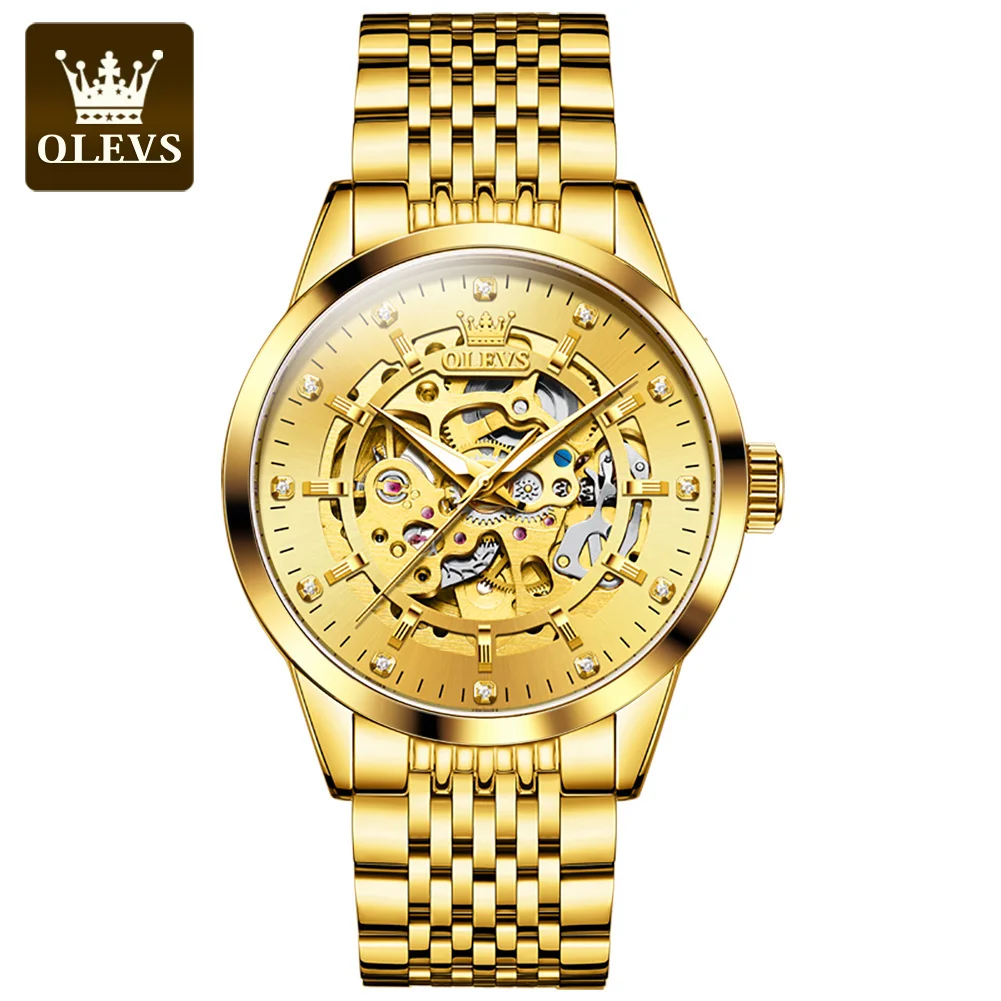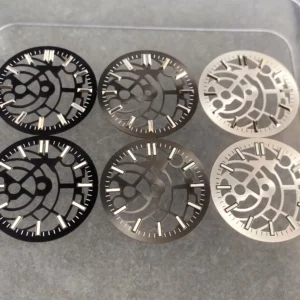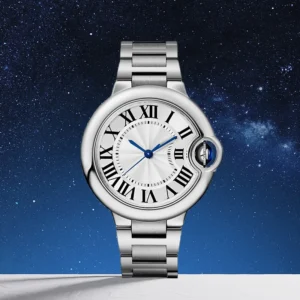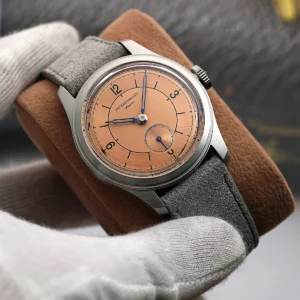Introduction: The Fascination with Movement Visibility
There’s something mesmerizing about watching the intricate dance of gears, springs, and wheels inside a mechanical watch. For centuries, these tiny mechanical marvels have captivated enthusiasts with their ability to measure time through purely mechanical means—no batteries, no circuits, just precision engineering and artisanal craftsmanship.
While most watches hide their inner workings beneath solid dials and cases, some designs celebrate the beauty of horology by revealing what lies beneath. These “openworked” timepieces come in various forms, but two stand out as particularly popular: open heart and skeleton watches.
The confusion between these two styles is common among watch enthusiasts and newcomers alike. Is a watch with a small window showing the balance wheel considered a skeleton watch? What exactly defines each style? And more importantly, which might be the right choice for your wrist?
This article aims to demystify both designs by exploring their definitions, highlighting their key differences, and helping you determine which style might better suit your preferences. Both fall under the broader category of “openworked” watches, but as we’ll discover, they represent distinctly different approaches to revealing the beauty of mechanical movements.
The allure of skeleton watches lies not just in their functionality but in the intimate connection they create between wearer and timepiece—allowing us to witness the miracle of mechanical timekeeping with each glance at our wrist.
Understanding Open Heart Watches: A Glimpse of the Beating Heart
An open heart watch represents a thoughtful compromise between traditional watch design and mechanical transparency. At its core, an open heart watch features a small aperture or “window” cut into the dial that reveals a specific portion of the movement within—typically the balance wheel and escapement assembly.
The term “open heart” is wonderfully descriptive, as it reveals what watchmakers often consider the “heart” of the timepiece: the balance wheel. This component oscillates rhythmically like a heartbeat, typically at a rate of 21,600 to 28,800 vibrations per hour, creating the characteristic ticking sound we associate with mechanical watches.
What distinguishes an open heart design is its focused and intentional nature:
- The aperture is typically small and strategically placed, often between 6 and 12 o’clock positions
- The opening specifically showcases the balance wheel and escapement rather than multiple movement components
- Most of the movement remains hidden behind the dial
- The dial retains its overall integrity and traditional design elements
- The visible portion creates a dynamic visual element as the balance wheel oscillates continuously
Unlike fully skeletonized watches, open heart designs maintain much of their traditional dial structure. This allows watchmakers to preserve conventional time-telling elements like hour markers, minute tracks, and complications while still offering a glimpse of the mechanical magic happening inside.
Many open heart watches also feature display casebacks, allowing the wearer to view the movement from both sides. This combination provides a comprehensive appreciation of the watch’s mechanics while maintaining a relatively traditional face-up appearance.
Our collection of open heart automatic watches showcases how this design philosophy balances mechanical intrigue with everyday wearability. The durability of these watches is impressive, with properly maintained automatic movements often lasting for decades with regular servicing.
Visual Characteristics of Open Heart Designs
Open heart watches possess a distinctive aesthetic that sets them apart in the world of horology. The focused aperture creates a captivating visual dynamic that draws the eye without overwhelming the overall design.
The balance wheel visible through the opening creates a mesmerizing effect as it oscillates back and forth, typically completing 4 to 8 oscillations per second. This constant motion brings the watch to life in a way that static dials cannot match, creating a visual reminder of the mechanical nature of the timepiece.
Despite this dynamic element, open heart watches maintain their essential nature as traditional timepieces. The majority of the dial remains intact, with:
- Hour markers and numerals that remain clearly visible
- Traditional hands for hours, minutes, and sometimes seconds
- Conventional dial textures and finishes in the non-open areas
- Standard watch face proportions and layouts
Watch designers take various approaches to framing these apertures. Some create elegant, polished surrounds that highlight the opening like a precious gem. Others integrate the aperture into the overall dial design through complementary indices or pattern work. Many open heart designs position the aperture to reveal not only the balance wheel but also parts of the escapement, offering a more comprehensive view of the “beating heart.”
The size of the aperture varies considerably between models. Some feature a modest opening that offers just a peek at the movement within, while others incorporate larger windows that become a dominant visual element. However, even with larger apertures, open heart watches fundamentally maintain more dial integrity than their skeleton counterparts.
This balanced approach has made open heart designs particularly popular in dress watches and everyday timepieces where readability remains essential. The evolution of watch design shows how watchmakers continuously find new ways to balance tradition with innovation, with open heart designs representing one such successful compromise.
The Appeal and Advantages of Open Heart Watches
Open heart watches have captured the interest of enthusiasts for several compelling reasons. They strike an elegant balance between mechanical fascination and practical wearability, offering advantages that appeal to both newcomers and seasoned collectors.
The primary appeal of an open heart design lies in its tasteful compromise. It satisfies curiosity about mechanical movements without sacrificing the traditional watch aesthetic that has been refined over centuries. This middle ground approach offers several distinct advantages:
- Enhanced legibility: With most of the dial intact, time-telling remains straightforward and intuitive, even at a glance
- Versatile aesthetics: Open heart designs transition easily between formal and casual settings
- Subtlety for everyday wear: The limited aperture makes these watches less visually overwhelming for daily use
- More accessible pricing: Typically more affordable than fully skeletonized watches due to less extensive modification of the movement
- Gateway to mechanical appreciation: Perfect for those beginning to explore mechanical watches without fully committing to the bold statement of a skeleton design
Open heart watches often maintain a more balanced proportion between dial and movement visibility. This makes them particularly suitable for those who appreciate mechanical craftsmanship but prefer a more understated wrist presence. They tend to draw fewer questions or attention in professional settings while still satisfying the wearer’s appreciation for horology.
Price points for quality open heart watches typically start lower than comparable skeleton models, making them more accessible entry points into the world of visible movements. This accessibility has helped many enthusiasts begin their journey into mechanical watch appreciation.
The design also allows for greater versatility in styling. Many automatic dress watches incorporate open heart elements without sacrificing their formal elegance, making them suitable companions for everything from business meetings to special occasions.
What Defines a True Skeleton Watch?
A skeleton watch takes the concept of movement visibility to its logical conclusion by removing as much non-essential material as possible from both the dial and movement itself. Unlike the focused aperture of an open heart design, skeletonization involves the extensive removal of metal from plates, bridges, and other components to create a transparent view throughout the entire timepiece.
True skeletonization is an art form that requires exceptional skill and craftsmanship. The process involves:
- Careful removal of non-essential metal from movement plates and bridges
- Maintaining the structural integrity while maximizing transparency
- Hand-finishing the exposed surfaces with decorative techniques
- Creating a three-dimensional visual experience that showcases the entire mechanical system
- Often removing the traditional dial entirely or replacing it with a minimal ring for hour markers
The defining characteristic of a skeleton watch is the comprehensive nature of this openworking. While an open heart watch offers a glimpse through a window, a skeleton watch removes the walls entirely. In traditional high-end skeletonization, up to 60-80% of the movement’s metal might be carefully removed while maintaining full functionality.
It’s important to distinguish between true skeleton watches and mass-produced watches with skeleton-like appearances. Authentic skeletonization involves:
- Starting with a complete movement
- Carefully removing material while maintaining structural integrity
- Hand-finishing exposed components
- Creating a harmonious overall design that highlights the movement architecture
The resulting timepiece transforms the movement itself into the primary visual element rather than merely revealing parts of it. Our collection of automatic skeleton watches demonstrates how this approach elevates the movement from functional mechanism to artistic centerpiece.
The skeletonization process represents one of the highest expressions of watchmaking art, requiring expertise in both engineering and aesthetics. This tradition has evolved alongside other watchmaking innovations, as seen in the heritage and evolution of timepieces throughout horological history.
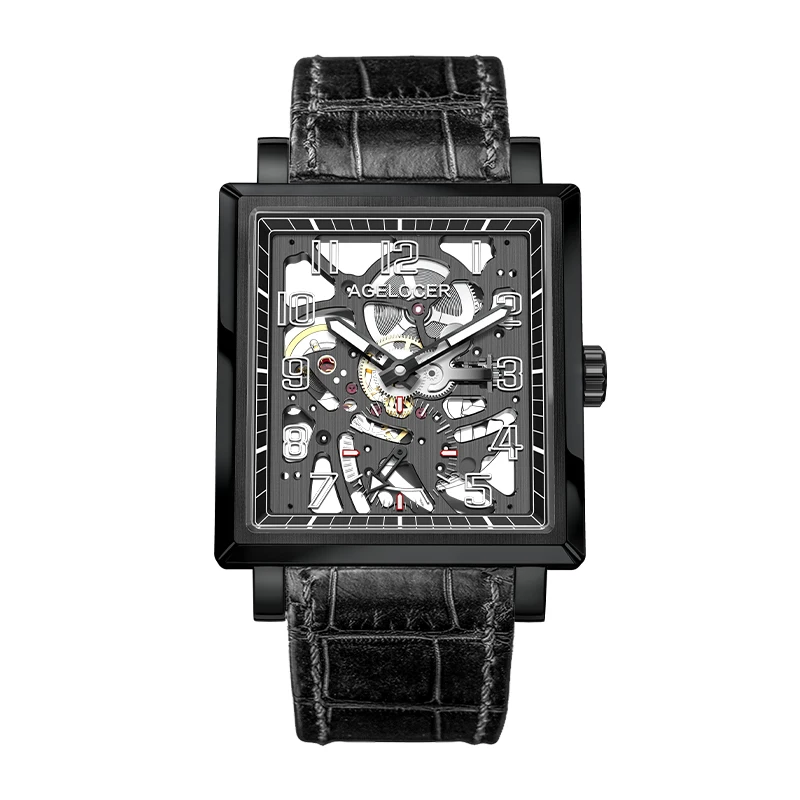
The Rich History of Skeleton Watchmaking
The practice of skeletonizing timepieces dates back to the late 18th century, originating with pocket watches during what many consider the golden age of mechanical horology. This technique emerged not merely as a stylistic choice but served practical purposes in early watchmaking.
Early skeleton pocket watches addressed two specific challenges: they demonstrated the watchmaker’s exceptional skill while also reducing the weight of relatively heavy pocket timepieces. By removing excess material, these watches became lighter while simultaneously showcasing the artisan’s mastery of the craft.
Master watchmakers like Abraham-Louis Breguet and Antide Janvier were among the pioneers who developed techniques for creating these openworked marvels. Their approaches to skeletonization established traditions that continue to influence modern watchmaking.
As timekeeping transitioned from pockets to wrists in the early 20th century, skeletonization techniques evolved accordingly. The smaller dimensions of wristwatches created new challenges for maintaining structural integrity while removing material, pushing watchmakers to refine their techniques further.
For much of horological history, skeleton watches remained rare, often created as custom commissions or special demonstration pieces. Their labor-intensive nature made them exclusive to wealthy patrons who could appreciate both their technical and artistic merits.
The modern resurgence of skeleton watches came during the mechanical renaissance of the late 20th century. As quartz technology threatened to make mechanical watches obsolete, many brands turned to skeletonization to highlight the beauty and craftsmanship that distinguished mechanical timepieces from their electronic counterparts.
Today’s skeleton watches build upon this rich history while incorporating modern manufacturing techniques and materials. Contemporary skeletonization often combines traditional handcraftsmanship with precision manufacturing, creating pieces that honor the past while embracing modern capabilities.
This historical evolution parallels other horological developments seen in the history of professional diving watches and the timeline of watchmaking innovation, demonstrating how technical challenges drive artistic and engineering excellence.
The Artistry of Skeleton Watch Design
The true distinguishing feature of skeleton watches lies in their elevation of the movement from mere mechanism to artistic centerpiece. When properly executed, skeletonization transforms utilitarian components into a mesmerizing exhibition of mechanical art.
The visual impact of a fully skeletonized movement is immediate and profound. Without the concealing presence of a dial, the three-dimensional architecture of the movement becomes the primary aesthetic element. The layered arrangement of wheels, springs, and bridges creates depth and visual interest that flat dials cannot match.
Master watchmakers apply various decorative techniques to enhance the beauty of exposed components:
- Anglage (beveling): Polished, angled edges on bridges and plates that catch the light
- Perlage (circular graining): Overlapping circular patterns applied to flat surfaces
- Côtes de Genève (Geneva stripes): Parallel decorative lines that create a rippling effect
- Hand-engraving: Intricate patterns or motifs cut into visible surfaces
- Black polishing: Mirror-like finish so perfect that the surface appears black from certain angles
The aesthetic approaches to skeletonization vary widely. Classical skeleton designs often feature ornate, flowing bridges with elaborate engravings that evoke baroque or rococo artistic traditions. Modern interpretations may embrace industrial aesthetics with architectural bridges, matte finishes, and contemporary materials like titanium or carbon composites.
In sophisticated designs, the structural elements themselves become functional components of the time display. Bridge shapes might serve as hour markers, or wheels may be positioned to highlight the passage of time. This integration of form and function represents the highest expression of skeleton design philosophy.
Our selection of mechanical skeleton watches showcases how different approaches to skeletonization can create distinctly different aesthetic experiences. The three-dimensional nature of these movements creates a dynamic visual experience that changes as light conditions shift throughout the day.
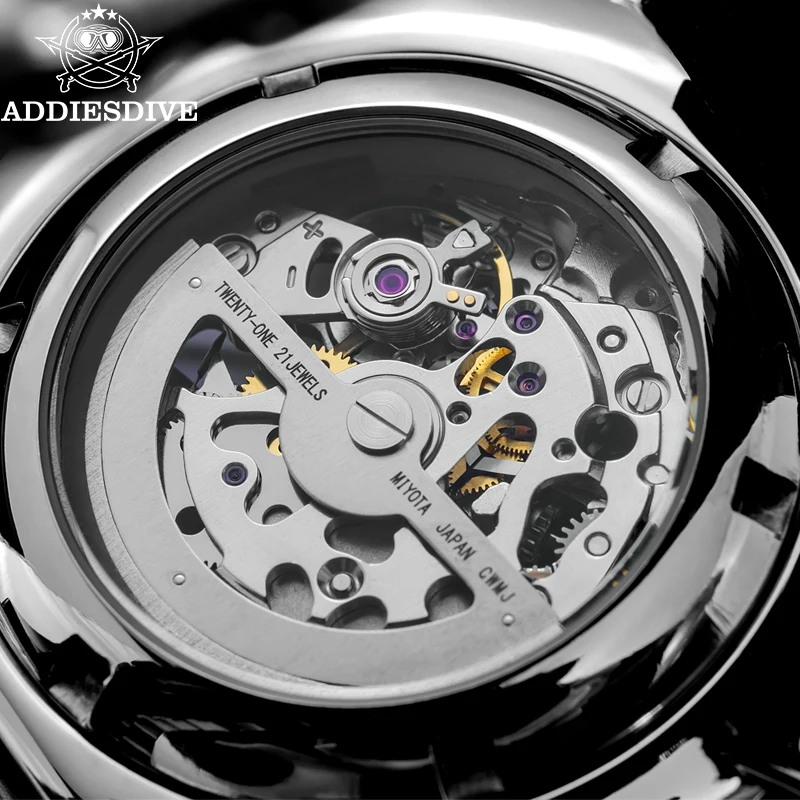
Practical Considerations for Skeleton Watch Ownership
While skeleton watches offer unparalleled visual drama, their distinctive design brings practical considerations that potential owners should weigh before making an investment. These factors influence not only the initial purchase decision but also long-term satisfaction with these unique timepieces.
Readability challenges represent the most immediate practical consideration. With no solid dial background, the hands must compete visually with the movement components beneath them. Manufacturers address this through various approaches:
- Contrasting hand colors or luminous treatments
- Raised chapter rings or hour markers to create separation
- Specialized hand shapes designed for visibility against busy backgrounds
- Tinted crystals or partial dial elements to improve contrast
Maintenance implications differ from conventional watches due to the exposed nature of skeleton movements. With more components visible:
- Dust accumulation becomes more noticeable over time
- Regular cleaning may be necessary to maintain aesthetic appeal
- Fingerprints or oils on movement components may be visible through both front and back crystals
Durability considerations arise from the extensive material removal. While properly executed skeletonization maintains structural integrity, these watches:
- May have reduced water resistance compared to solid-dial counterparts
- Could require more careful handling to avoid damage to exposed components
- Might be more susceptible to the effects of moisture or environmental factors
Price implications reflect the labor-intensive nature of true skeletonization. Quality skeleton watches typically command premium prices due to:
- Additional skilled labor required for removing and finishing components
- More complex assembly procedures
- Increased rejection rates during production
- Specialized techniques for ensuring proper functioning despite material removal
Many enthusiasts find these considerations worthwhile given the unique aesthetic and emotional experience that skeleton watches provide. For those interested in exploring mechanical movements without these potential challenges, manual wind watches with solid dials and display casebacks offer an alternative approach.
The evolution of watchmaking technology has addressed many of these challenges through innovative approaches, paralleling developments seen in the evolution of dive watch technology.
Understanding Openworked Watches: The Overarching Category
“Openworked” serves as the umbrella term encompassing both skeleton and open heart designs, along with various hybrid approaches. Understanding this broader category helps clarify the relationship between different styles of movement visibility.
The term “openworked” derives from the technique of removing material to create transparency or visibility. In horological contexts, it refers to any watch where material has been deliberately removed to reveal internal components, regardless of the extent of this removal.
This creates an important taxonomic relationship:
- All skeleton watches are openworked (they represent the most extensive application of the technique)
- All open heart watches are openworked (they apply the technique in a limited, focused manner)
- Not all openworked watches fit neatly into either category (many exist on a spectrum between the two)
Between classic open heart designs and fully skeletonized watches lies a range of partially skeletonized approaches. These might include:
- Multiple apertures or “windows” showing different movement sections
- Partially cut-away dials that retain some solid sections
- Transparent or semi-transparent dial materials that reveal the movement
- Combination approaches that emphasize certain components while concealing others
Watch manufacturers sometimes use terminology inconsistently in marketing materials, with “skeleton” occasionally applied to watches that technically feature open heart designs. The French term “à jour” (meaning “to day” or “with light”) is sometimes used in traditional watchmaking to describe openworked techniques.
Understanding this spectrum helps watch enthusiasts better appreciate the craftsmanship involved and make more informed choices. The techniques used in creating openworked watches relate to broader watchmaking traditions and innovations, as seen in the milestones of underwater watch engineering, where technical solutions often lead to distinctive aesthetic approaches.
Head-to-Head: Key Differences Between Open Heart and Skeleton Designs
When comparing open heart and skeleton designs directly, several key distinctions become apparent. Understanding these differences helps clarify both the technical and aesthetic aspects that distinguish these two approaches to movement visibility.
Extent of Movement Exposure
– Open Heart: Limited visibility focused primarily on the balance wheel and escapement through a specific aperture
– Skeleton: Comprehensive visibility of the entire movement achieved through extensive removal of material from plates, bridges, and often the dial
Dial Integrity and Readability
– Open Heart: Maintains most of the traditional dial, preserving conventional time-telling elements and generally offering better legibility
– Skeleton: Often eliminates the conventional dial entirely, requiring alternative solutions for hour markers and potentially sacrificing some readability
Aesthetic Impact and Visual Presence
– Open Heart: Creates a subtle dynamic element within a largely traditional watch design
– Skeleton: Makes a bold statement with the movement architecture becoming the primary visual focus
Demonstration of Watchmaking Craftsmanship
– Open Heart: Highlights a specific, fascinating aspect of the movement (usually the regulating organ)
– Skeleton: Showcases the comprehensive architecture and finishing of the entire mechanical system
Manufacturing Complexity and Price Implications
– Open Heart: Requires relatively minimal modification to standard movements, typically resulting in more accessible price points
– Skeleton: Demands extensive additional labor for material removal and finishing, generally commanding significantly higher prices
Versatility and Wearing Contexts
– Open Heart: More versatile for everyday wear and formal situations due to more traditional appearance
– Skeleton: Makes a stronger visual statement that may be less suitable for conservative environments but offers greater horological drama
The evolution of both designs continues to advance alongside other watchmaking innovations, as documented in the timeline of diving watch innovations. The technical challenges of creating these watches has pushed development in both craftsmanship and movement decoration, benefiting the entire industry.
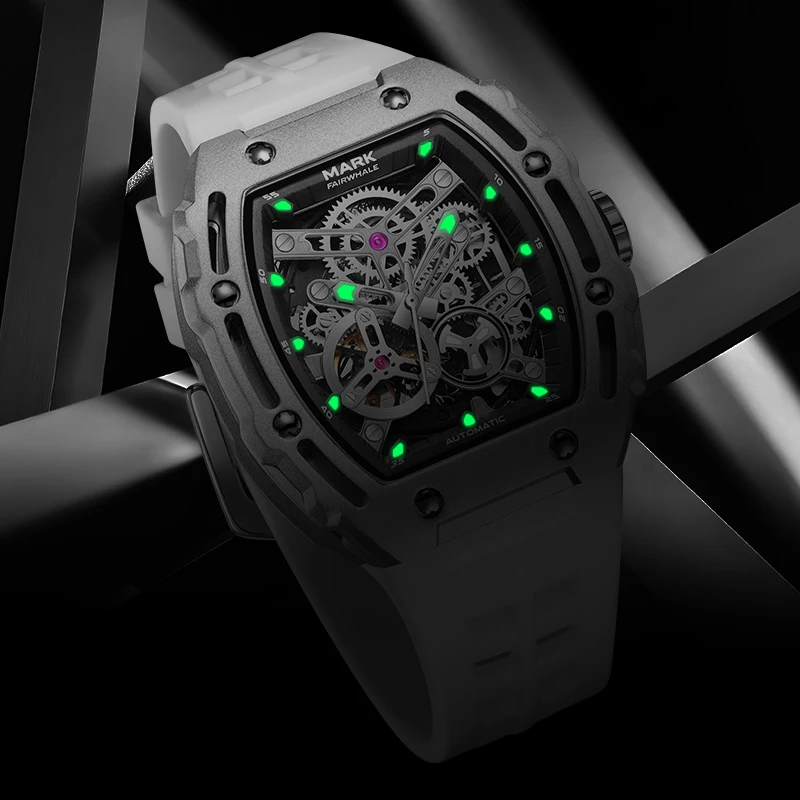
Which Style Suits Your Wrist? Decision Factors
Choosing between open heart and skeleton designs ultimately comes down to personal preferences, lifestyle considerations, and how you intend to wear the watch. Here are key factors to consider when making your decision:
Personal Style Preference
If you prefer subtle, classic designs that maintain traditional watch aesthetics while offering a glimpse of mechanical interest, an open heart watch likely aligns better with your taste. If you’re drawn to bold, attention-grabbing pieces that showcase horological craftsmanship as their primary feature, a skeleton design may be more satisfying.
Daily Wear and Legibility Needs
For those who rely on quickly reading the time throughout their day, open heart designs generally offer superior legibility. Their mostly intact dials provide better contrast for hands and hour markers. Skeleton watches, while visually stunning, often require a more deliberate look to discern the time.
Budget Considerations
Quality mechanical watches represent investments, and skeletonization adds significant cost due to the additional labor involved. Open heart designs typically offer a more accessible entry point to movement visibility while maintaining good value. If budget is a primary concern, open heart designs provide more options at lower price points.
Wearing Occasions and Versatility
Consider your typical environments and dress codes. Open heart watches transition more seamlessly between casual and formal settings due to their more traditional appearance. Skeleton watches make stronger statements that may be perfect for some occasions but potentially too bold for others.
Level of Horological Interest
Your depth of interest in watchmaking mechanics may influence your preference. Those fascinated by the comprehensive architecture of movements often gravitate toward skeleton designs, while those who appreciate a hint of mechanics within a more conventional watch might prefer the open heart approach.
For those seeking distinctive expressions of mechanical watchmaking, our collection of black skeleton watches offers contemporary interpretations of this traditional craft. The right choice ultimately depends on your personal relationship with horology and how you wish to express it on your wrist.
Is the Hybrid Approach Right for You? Partial Skeletonization
Between the focused aperture of open heart designs and the comprehensive transparency of skeleton watches lies an intriguing middle ground: partial skeletonization. These hybrid approaches offer alternative ways to appreciate mechanical movements while addressing some of the practical concerns associated with fully skeletonized watches.
Partial skeletonization takes various forms, including:
- Multiple apertures or “windows” strategically placed to reveal different movement components
- Cut-out bridges and plates that maintain some solid sections for structural integrity
- Semi-transparent dials that allow visibility while maintaining surface area for hour markers
- Multi-level construction with skeletonized elements at different depths
- Peripheral skeletonization that maintains a solid central dial area
These approaches create watches with distinctive characteristics:
- Better legibility than fully skeletonized pieces due to more defined spaces for time indicators
- More visual drama than simple open heart designs
- Often more accessible price points than fully hand-skeletonized watches
- Greater design versatility allowing for more creative expressions
Partially skeletonized watches can be particularly appealing for those who appreciate mechanical visibility but find full skeleton designs too visually busy for everyday wear. They strike a balance between horological exhibition and practical time-telling that many enthusiasts find ideal.
For collectors interested in distinctive mechanical expressions, our collection of unique automatic watches includes several examples of innovative partial skeletonization. These pieces demonstrate how creative approaches to movement visibility can result in watches that are both practical and visually captivating.
Classic Automatic Dress Watches, Day Date Automatic Watches, Perpetual Calendar Automatic Watches
Price range: $540.60 through $574.60 Select options This product has multiple variants. The options may be chosen on the product pageClassic Automatic Dress Watches, GMT Automatic Watches, GMT Pilot Watches
Price range: $1,240.86 through $1,463.33 Select options This product has multiple variants. The options may be chosen on the product pageAutomatic Skeleton Watches, Open Heart Automatic Watches
$98.36 Select options This product has multiple variants. The options may be chosen on the product pageBlack Skeleton Watches, Mechanical Skeleton Watches
Price range: $37.40 through $111.92 Select options This product has multiple variants. The options may be chosen on the product pageClassic Automatic Dress Watches, Thin Automatic Dress Watches
$437.64 Select options This product has multiple variants. The options may be chosen on the product pageClassic Manual Wind Watches, Manual Wind Dress Watches
Price range: $425.50 through $462.50 Select options This product has multiple variants. The options may be chosen on the product page
Maintenance Considerations for Exposed Movements
Watches with exposed movements, whether open heart or skeleton designs, require some special maintenance considerations to keep them looking and performing their best. The visibility that makes these watches appealing also makes proper care especially important.
Dust and Debris Management
Without the protection of a solid dial, movement components are more exposed to environmental elements:
– Open heart watches typically collect less dust due to their limited aperture
– Skeleton watches, with more exposed surface area, tend to accumulate more visible dust over time
– Regular gentle cleaning with a soft brush may be necessary to maintain aesthetic appeal
Moisture Concerns
The openings necessary for movement visibility can impact water resistance:
– Many open heart and skeleton watches have reduced water resistance ratings
– Extra caution should be taken around water, especially with skeleton models
– Condensation can be more visible if moisture does enter the case
Service Intervals
Proper maintenance scheduling becomes even more important:
– Standard service intervals of 3-5 years are typically recommended
– Signs of wear or contamination may be more visible than in conventional watches
– Professional servicing ensures both aesthetic and mechanical integrity
Handling Precautions
Special care when handling helps preserve both appearance and function:
– Fingerprints on visible movement components can be particularly noticeable
– Avoid touching exposed elements when handling the watch
– Store in a watch box or winder when not in use to minimize dust exposure
The case design also influences maintenance requirements. Our collection of square and rectangular automatic watches demonstrates how different case geometries can affect movement exposure and protection. Environmental factors similar to those faced by watches designed for specific conditions, as seen in the influence of marine exploration on dive watches, can also impact maintenance needs for everyday timepieces with exposed movements.
Beyond Mechanics: The Emotional Appeal of Movement Visibility
The attraction to watches with visible movements extends far beyond technical appreciation into profound emotional territory. These timepieces create connections that conventional watches often cannot match.
There’s something deeply satisfying about witnessing the physical process of timekeeping. Unlike digital devices that abstract time into numerical displays, mechanical watches with visible movements reveal the actual physical process of measuring our most precious resource. This transparency creates a more intimate relationship between wearer and timepiece.
The visible oscillation of a balance wheel—steady, reliable, and continuous—offers a meditative quality. Many owners report finding themselves lost in contemplation while watching the rhythmic motion of their watch’s heart. This experience connects us to something both ancient and timeless in an age of digital distraction.
Visible movements also serve as powerful reminders of human ingenuity and craftsmanship. In a world increasingly dominated by mass production, these watches celebrate individual human skill and generations of accumulated knowledge. Each visible component represents hundreds of years of problem-solving and artistic tradition.
These watches often become natural conversation starters. Whether an open heart design with its focused glimpse or a skeleton watch with its comprehensive transparency, they invite questions and spark discussions about craftsmanship, engineering, and aesthetics that conventional watches rarely inspire.
Perhaps most significantly, watches with visible movements reconnect us to the fundamental nature of mechanical timekeeping. They remind us that beneath the surface of even the most conventional timepiece lies a world of mechanical poetry—a tradition that connects us to the evolution of precision instruments that have shaped human history.
Who Makes Notable Open Heart and Skeleton Watches?
The approaches to open heart and skeleton watchmaking vary considerably across the horological landscape. Different watchmaking traditions and price segments have developed distinctive interpretations of these designs.
In traditional Swiss watchmaking, skeletonization represents one of the highest expressions of the craft. The approach typically emphasizes hand-finishing, with extensive anglage (beveling), polishing, and decorative engraving. Open heart designs from Swiss traditions often feature elegant, understated apertures that complement rather than dominate the dial design.
Japanese watchmaking has developed its own distinctive approach, particularly to skeleton watches. These designs frequently embrace modern aesthetics with architectural bridges, innovative materials, and sometimes more industrial finishing techniques. Japanese open heart watches often feature precisely shaped apertures with immaculate execution even at more accessible price points.
Independent watchmakers have created some of the most innovative interpretations of movement visibility. Many combine traditional hand-finishing techniques with contemporary design sensibilities, creating pieces that honor horological traditions while pushing aesthetic boundaries.
Manufacturing innovations have made both styles more accessible. Modern techniques like CNC machining allow for precise material removal at lower cost, while advanced finishing processes create attractive results with less hands-on labor. These developments have brought skeleton aesthetics to more affordable segments while maintaining quality.
Entry-level skeleton and open heart watches now offer surprisingly good value, though they typically feature simpler movement architecture and less elaborate finishing than their luxury counterparts. Mid-range offerings often represent the sweet spot between accessibility and craftsmanship, with thoughtful design and respectable finishing.
At the luxury end, skeleton watches showcase extraordinary handwork, with some high-end pieces requiring months of skilled labor just for the skeletonization and finishing. These represent the pinnacle of the art form, with prices to match their exceptional craftsmanship.
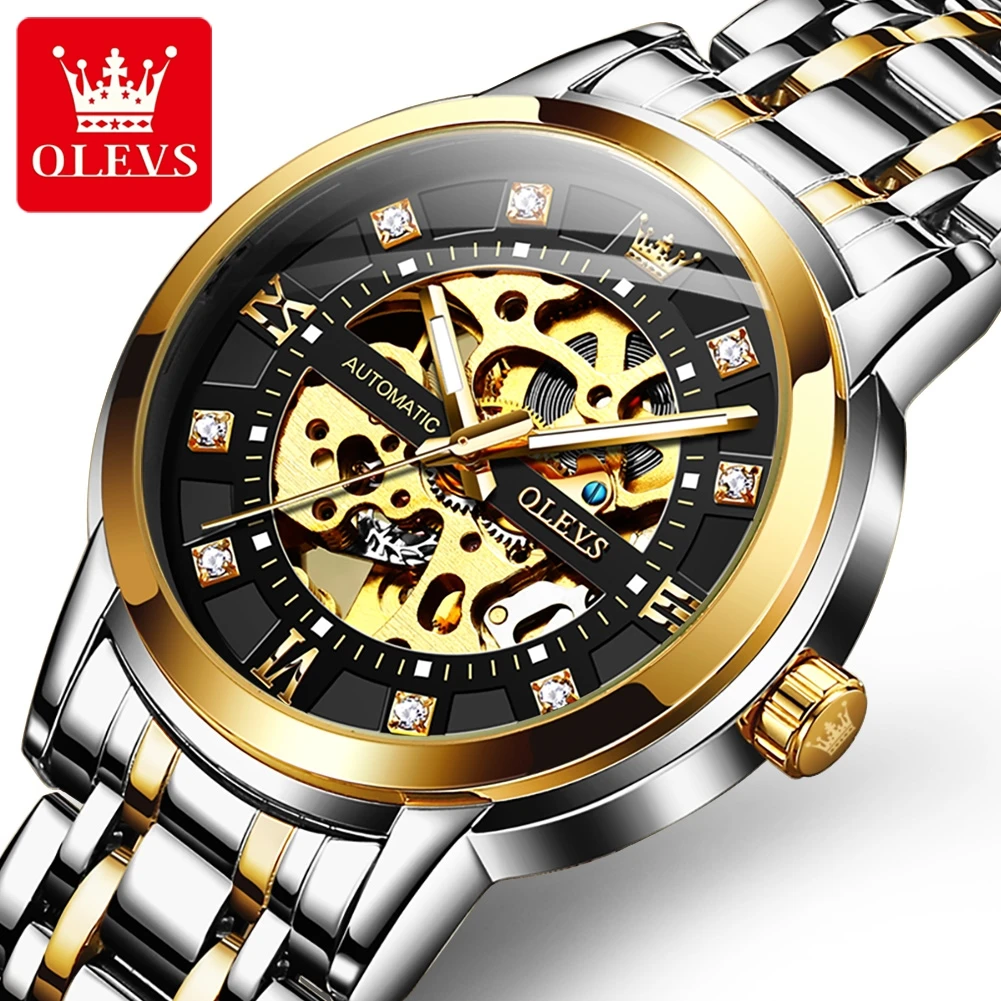
Conclusion: Finding Your Perfect Window Into Timekeeping
The choice between open heart and skeleton watch designs ultimately comes down to your personal connection with mechanical horology and how you wish to experience it in your daily life. Both styles honor the extraordinary craft of mechanical watchmaking while offering different perspectives on its beauty.
Open heart designs provide a focused glimpse into the beating heart of the timepiece while maintaining the traditional watch aesthetic that has evolved over centuries. Their balanced approach makes them versatile companions for a wide range of situations, offering mechanical fascination without overwhelming visual drama.
Skeleton watches represent the ultimate celebration of movement architecture and finishing, transforming timekeeping into a comprehensive visual experience where the mechanism becomes the primary aesthetic element. Their bold presence makes a clear statement about appreciation for mechanical craftsmanship.
The key differences we’ve explored—from extent of movement exposure to readability considerations, from aesthetic impact to price implications—provide a framework for determining which approach better aligns with your preferences and needs.
Remember that hybrid approaches like partial skeletonization offer middle-ground options that may provide the ideal balance for your specific tastes. The spectrum of openworked watches provides something for nearly every preference and budget.
Whichever style speaks to you, these watches offer something increasingly rare in our digital age: a tangible connection to traditional craftsmanship and the physical measurement of time. They remind us that beneath the surface of even the simplest timepiece lies a world of mechanical poetry—one that continues to captivate enthusiasts despite the march of technology.
At Sharp Aspect, we celebrate this enduring fascination with mechanical artistry in timepieces that honor both tradition and innovation. The perfect window into timekeeping awaits your discovery.

